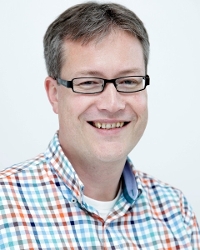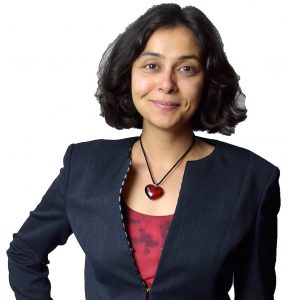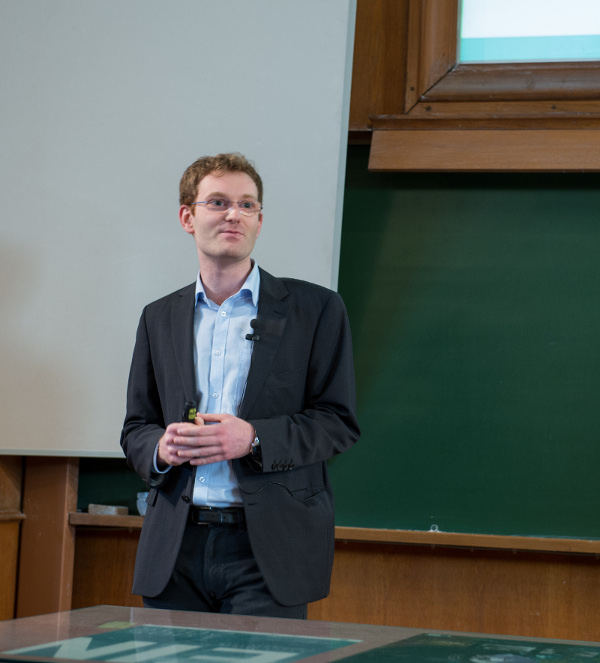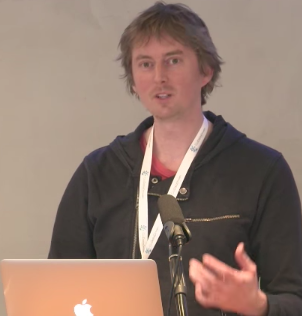Invited Speakers

Unravelling black holes with gravitational waves
Chris van den Broeck
Co-chair of the LIGO-Virgo Working Group on Testing General Relativity
Van Swinderen Institute, University of Groningen, the NetherlandsThe ability to directly detect gravitational waves has opened up the possibility of empirically studying the detailed structure of black holes. In particular, a wealth of information is contained in the way a newly formed black hole oscillates ("ringdown"), which will enable an indirect test of the celebrated no-hair theorem. If a deviation is seen then this may be an indication of quantum effects near the horizon. Prompted by Hawking's information paradox, alternatives to standard black holes have been proposed, such as firewalls and fuzzballs, which would give rise to gravitational wave "echoes" long after the ringdown signal has died down. In the next few years, after the anticipated upgrades of the LIGO and Virgo detectors, such effects will become accessible, opening up a new chapter in the study of gravitation in the strong-field regime.

Lighting up Einstein's dark Universe
Alessandra Silvestri
Fellow of the Delta Institute for Theoretical Physics
Lorentz Institute at the University of Leiden, the NetherlandsIt is now an exceptional time for modern cosmology, when we can observe the universe with high precision and connect cosmological measurements with theory. The excitement about the advances of observational cosmology is accompanied by the awareness that we face some major challenges: we still lack compelling theoretical models for dark matter, that accounts for the formation of the structure we see around us , and dark energy, that drives cosmic acceleration, as well as a deeper understanding of the mechanism that set up primordial conditions. I will discuss the theoretical aspects of these challenges and our approaches at shedding light on them, with particular focus on dark energy.

Cosmology and more with Euclid
Henk Hoekstra
Professor of Observational Cosmology
Observatory at the University of Leiden, the NetherlandsEuclid is an ESA M-class mission that will survey 15000 square degrees with HST-like resolution. It is scheduled for launch about 4 years from now and can be considered the z~1 equivalent of the highly successful SDSS. The main science driver of Euclid is to study the nature of dark energy, but it also enables unprecedented tests of our understanding of gravity on cosmological scales, tell us more about the nature of dark matter, the initial conditions of the Universe and constrain the combined mass of the neutrinos. It will also leave an amazing legacy of deep optical and NIR data that will impact many aspects of astronomy. In this talk I will provide an overview of the mission, focusing on weak lensing, one of the main probes that drives the design of this exciting project.

Information from the Cosmic Dark Ages
Pratika Dayal
Rosalind Franklin Assistant Professor
Kapteyn Astronomical Institute in Groningen, the NetherlandsOver the next few years, state-of-the-art-facilities such as the James Webb Space Telescope, the Low Frequency Array (Lofar) and the Square Kilometre Array (SKA) will yield petabytes of data from the "cosmic dark ages". Disentangling these diverse pieces of information into a global picture will require cutting-edge theoretical models. In this talk, I will highlight how we can combine galaxy data with 21cm observations from these earliest epochs to shed light on the dark ages of our Universe.

Cosmic web analysis and Information Theory
Florent Leclercq
Research Fellow at the Imperial Centre for Inference and Cosmology (ICIC)
Imperial College London, EnglandRecent developments of Bayesian large-scale structure inference technology naturally bring in a connection between cosmic web analysis and information theory. I will discuss the Shannon entropy of structure-type probability distributions and the information gain due to Sloan Digital Sky Survey galaxies, propose a decision criterion for classifying structures in the presence of uncertainty, and introduce utility functions for the optimal choice of a cosmic web classifier, specific to the application of interest. As showcases, I will discuss the phase-space structure of nearby dark matter, the discrimination of dark energy models from the cosmic web and an approach inspired by supervised machine learning for predicting galaxy colours given their large-scale environment.

Quantum entanglement and space-time
Michael Walter
Assistant Professor at the University of Amsterdam
Senior Researcher at QuSoft, the NetherlandsIn the past decade, a striking picture began to form that the way space-time emerges in quantum gravity is, through the holographic duality, intimately connected to the way quantum bits are entangled in a quantum computer. In this talk, I will give an introduction to this exciting new frontier of research, highlighting how key concepts from quantum information theory such as quantum entanglement, error correction and tensor networks may offer new tools and conceptual insight.

How Much Coral Habitat is there globally? An Ecological Modelling and Remote Sensing Journey
Chris Roelfsema
Senior Research Fellow at the Remote Sensing Research Centre
the University of Queensland, AustraliaGlobal coral reefs cover 1% of the Oceans, with 25% of Marine species and 500 million people rely on these natural wonders, but reefs are impacted through climate change. Reef conservation requires consistent habitat maps, however there is no single map created consistently, describing geomorphic zonation (e.g. slope, flat, crest) or bottom composition (e.g. coral, algae, sand) over the full extent of the worlds coral reefs. Such maps have not been produced yet due to the costs of mapping the extensive and mostly submerged reefs, hence we do not know the actual extent of coral habitat. This presentation introduces an approach that integrated ecological mapping with empirical modelling to characterise the geomorphic zonation and bottom composition for shallow reefs of for the Great Barrier Reef. Our mapping approach was applied on 237 reefs on the GBR and combined: field data; Landsat OLI 8-derived mosaic and water depth (15m pixels); slope, wave-height; object based analysis; and eco-geomorphological modelling. The methods and digital maps represent a significant advancement in our capability to map at a relative fine scale over a large extent, hence it’s now being adapted to apply to all global coral reefs. The adaption includes the use of the higher spatial resolution Planet Dove Imagery (3.7m pixels), resulting insignificant increase size of data sets and processing resource needs. The geomorphic and bottom type maps created for coral reefs globally, will support management and science for the conservation of the GBR or other reefs globally.

Big data and visualization in the Jupyter Notebook
Maarten Breddels
Astronomer and Data Scientist
Freelance developer / consultant, the NetherlandsWith big astronomical catalogs such as Gaia containing more than a billion stars becoming common, we need new methods to visualize and explore these large datasets. Data volumes of this size require different visualization techniques since scatter plots become too slow and meaningless due to overplotting. We solve the performance and visualization issue using binned statistics, e.g. histograms, density maps, and volume rendering in 3d. The calculation of statistics on N-dimensional grids is handled by Python library called vaex, which I will introduce. It can process at least a billion samples per second, to produce for instance the mean of a quantity on a regular grid. Jupyter notebooks are becoming the default workspace for (data) science and are the main platform vaex is targeting. Using Jupyter Hub, users can now move their code to where the data is without changing their platform. However, to visualize higher dimensional data in the notebook interactively, no proper solution existed. This led to the development of ipyvolume, which can render 3d volumes and up to a million points in the Jupyter notebook. It allows for sharing with colleagues, rendering on your tablet (paperless office), outreach and press release material to even full dome and 360-degree videos capturing. The combination of vaex and ipyvolume in the Jupyter notebook are a good demonstration of the power of exploring Big Data in the Jupyter ecosystem.

Photometric redshifts for large panchromatic surveys
Giuseppe Longo
Professor of Astrophysics
The University Federico II in Napoli, Italy
